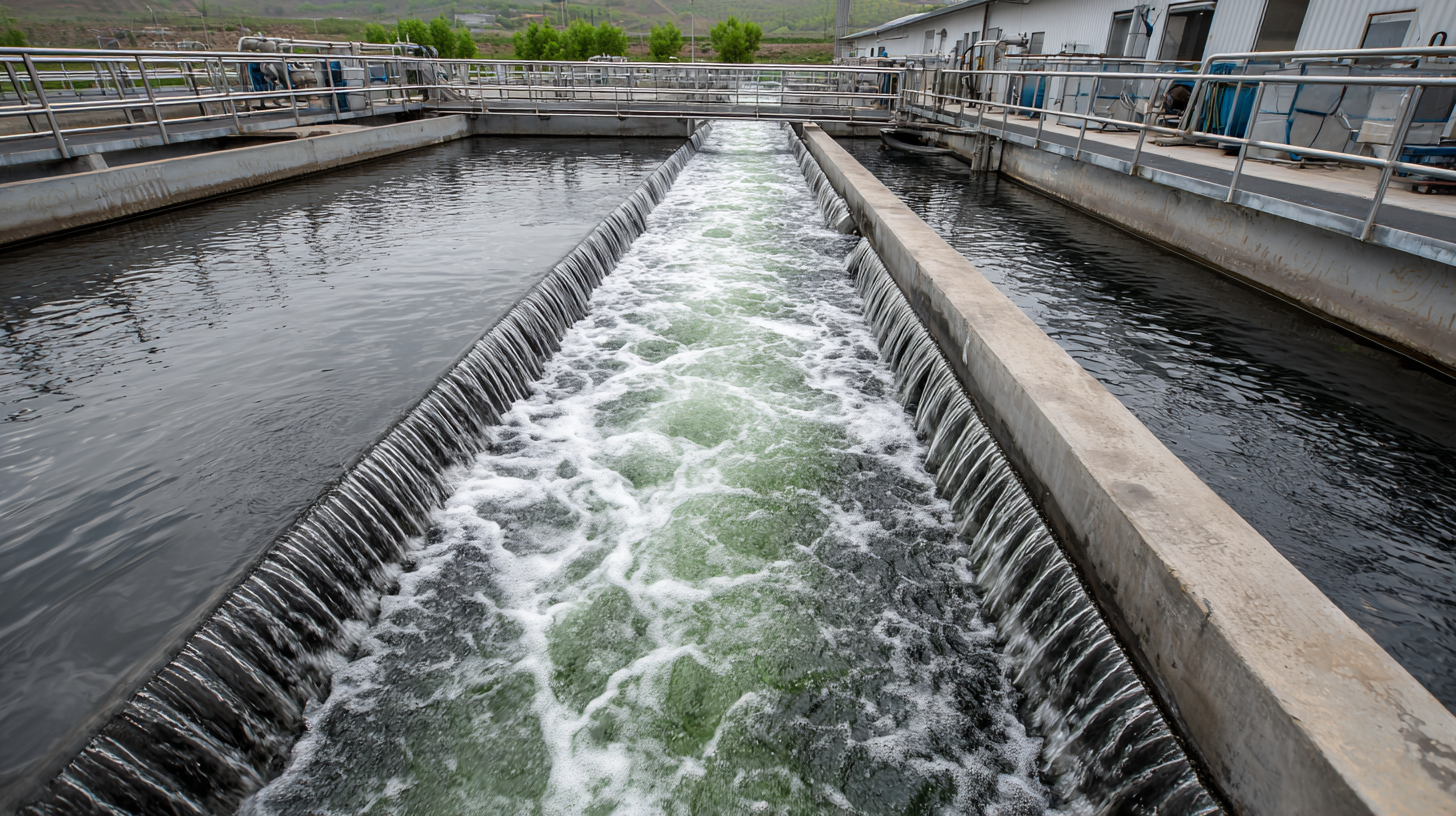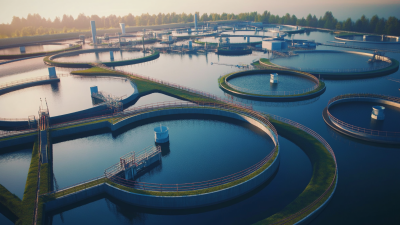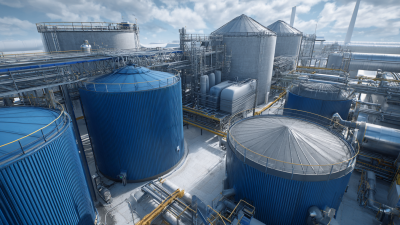In recent years, the importance of sustainable waste management has come to the forefront of environmental discourse, especially in the context of Sludge Treatment. According to a report by the International Water Association (IWA), nearly 4 billion cubic meters of sludge are generated globally every year, with significant implications for both environmental sustainability and public health. The need to optimize treatment processes has never been more pressing, as inefficient sludge management can lead to increased greenhouse gas emissions and adverse effects on ecosystems.
Renowned sludge treatment expert Dr. Emily Tran emphasizes the urgency of the situation, stating, "The future of waste management hinges on our ability to innovate and improve sludge treatment technologies, which can not only reduce costs but also enhance the overall sustainability of our operations." As we look towards 2025, the strategies we implement today will be critical in reshaping the framework of sludge treatment. Advancements in microbial fuel cells, anaerobic digestion, and thermal drying processes are emerging as game-changers in the quest for effective sludge management solutions, making it imperative for stakeholders in the industry to stay informed and adaptable.

Reducing sludge volume is crucial for improving the efficiency and sustainability of wastewater treatment processes. One effective technique is the implementation of advanced anaerobic digestion systems. These systems convert organic matter into biogas, which can be utilized for energy production. By increasing the retention time and optimizing the microbial communities within anaerobic digesters, facilities can significantly enhance the degradation of sludge, thereby reducing the overall volume produced.
Another promising approach is the use of dewatering technologies, such as centrifugation and membrane filtration. These techniques not only remove excess water but also concentrate the solids, enabling easier handling and reduced transportation costs. Additionally, chemical additives can be employed to improve the settling properties of sludge, facilitating a more efficient separation process. By combining these methods, wastewater treatment plants can achieve substantial reductions in sludge volume while simultaneously producing reusable materials, contributing to sustainable waste management practices.
Innovative technologies play a crucial role in enhancing sludge stabilization and dewatering, significantly contributing to sustainable waste management practices. Advanced methods such as anaerobic digestion and thermal hydrolysis not only reduce the volume of sludge but also convert waste into biogas, which can be used to generate renewable energy. These technologies improve overall treatment efficiency by stabilizing the organic material, thereby minimizing odors and pathogen levels, making the sludge safer for disposal or use in land reclamation.

Additionally, the integration of membrane filtration techniques has revolutionized sludge dewatering processes. These systems can effectively separate solids from liquids at a molecular level, resulting in higher quality effluent and reduced reliance on traditional, energy-intensive methods. Coupled with real-time monitoring and automation, these innovations ensure optimal performance and adaptability to fluctuating waste characteristics. By embracing these cutting-edge technologies, wastewater treatment facilities can enhance their operational efficiency, reduce environmental impact, and meet the growing demands for sustainable waste management solutions.
In the realm of wastewater treatment, the practice of resource recovery has emerged as a pivotal focus for ensuring sustainable waste management. Efficient wastewater processes not only mitigate pollution but also allow for the extraction of valuable resources, thereby contributing to a circular economy. Modern approaches emphasize innovative techniques that convert waste streams into useful products, such as biogas, fertilizers, and clean water. This transformation is particularly essential for industries like pet food processing, where high organic loads and contaminants present unique challenges. By adopting sustainable practices, these sectors can optimize their operations while reducing environmental impacts.
Moreover, municipalities and organizations are increasingly recognizing the importance of awards and recognition programs that highlight sustainable wastewater initiatives. For instance, awards received by cities for innovative projects serve as benchmarks for effective resource recovery and environmental protection. Such initiatives illustrate a growing commitment to sustainability within the wastewater treatment sector, emphasizing that strategic investment in technology and practices can lead to significant operational efficiencies and higher resource yields. Ultimately, the drive for sustainable practices in wastewater management reflects a broader recognition of environmental stewardship and the need for responsible resource utilization.
| Process Type | Efficiency (%) | Energy Consumption (kWh/m³) | Cost (USD/m³) | Resource Recovery (%) |
|---|---|---|---|---|
| Anaerobic Digestion | 85% | 0.75 | 15 | 65% |
| Aerobic Digestion | 75% | 1.2 | 20 | 50% |
| Thermal Hydrolysis | 90% | 1.5 | 25 | 70% |
| Filter Press | 80% | 0.5 | 12 | 40% |
| Composting | 70% | 0.2 | 8 | 30% |
As the global focus on sustainable waste management intensifies, the integration of automation and artificial intelligence (AI) in sludge management systems becomes crucial. According to a report by Grand View Research, the sludge treatment market is expected to reach $15 billion by 2025, with an annual growth rate of 4.5%. Automation offers enhanced efficiency and reduces operational costs, while AI algorithms can analyze vast amounts of data to optimize treatment processes, predict maintenance needs, and improve decision-making.
Tips for implementation include starting with pilot projects to identify the most effective technologies tailored to your specific facilities. Incorporating AI-powered sensors can monitor sludge composition in real-time, allowing immediate adjustments that enhance treatment efficacy. Furthermore, leveraging predictive maintenance tools can minimize downtime and reduce the risk of equipment failure.
AI and automation can also play a pivotal role in regulatory compliance. Adopting automated reporting systems ensures that treatment processes align with environmental standards, streamlining operations. By embracing these technologies, organizations can significantly improve their sludge management processes, contributing to a more sustainable future.
Effective monitoring and optimization strategies are essential for enhancing sludge treatment processes in sustainable waste management. Continuous improvement in sludge treatment can be achieved by implementing real-time monitoring systems that track key performance indicators. These systems can provide valuable insights into treatment efficiency, allowing operators to identify potential issues before they escalate. By employing advanced sensors and data analytics, facilities can optimize their treatment parameters, ensuring that processes are operating at peak efficiency.
In addition to real-time monitoring, optimization strategies such as process automation and predictive maintenance play crucial roles in sludge management. Automating routine tasks minimizes human error and maximizes operational efficiency. Predictive maintenance, driven by data collected from monitoring systems, can anticipate equipment failures, reducing downtime and maintenance costs. By integrating these strategies, facilities can not only enhance the performance of their sludge treatment processes but also contribute to overall sustainability goals, reducing environmental impacts and promoting resource recovery.







